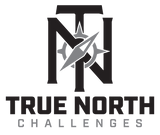How to Set Up a Home Gym

Strength training is critical for endurance athletes, particularly runners, because the stronger and more stable you are the more resilient you’ll be to injury and the more power you’ll be able to put into moving yourself forward.
Winter is a perfect time for runners to take a step back from their running and work on strength training. Weather isn’t as nice outside and races aren’t happening for a while, so winter is the time endurance athletes should focus on strength training.
But with gyms still closed down, constrained, or just plain old gross, right now a lot of endurance athletes are wondering how they can workout at home without having to spend thousands of dollars on home gym equipment.
In this article we’re going to share with you a basic home gym setup that you can put together for under $300 that will help get you strong and ready for the next race season, and we’ll share some exercises you can do with this equipment that are ideal for endurance athletes.
RESISTANCE BANDS
Resistance bands are one of the best bangs for your buck when it comes to home gym equipment. They only cost $5-15 each and they’re extremely versatile.
Forget enormous exercise machines and huge squat racks! If you want to shake, cry, and get strong in the process then some basic movements with resistance bands are perfect.
For as little as $10 you can get a great set of resistance bands; check out Amazon for some great, and inexpensive, options.
I like to use resistance bands for leg abductions movements like Monster Walks, Duck Walks, and leg raises while lying on your side. These exercises work on the glute Medius (side of your bum) which is critical for stabilizing your body with every single foot plant.
People who sit a lot in a chair, at a desk, or in the car everyday will have a tight chest which results in an inactive back. Using resistance bands to help with chest stretching is a great way to unlock a lot of upper body mobility and stability.
STABILITY PLATFORMS
“If mamma ain’t happy, nobody’s happy.” This is a phrase that was told to me by a strength coach to professional triathletes when talking about foot and ankle mobility.
If you’re a runner, a skier, a cyclist, a snowshoer, or you do any activity where your feet plant and your ankle moves in any direction, you need a strong foot and an ankle that moves easily.
I like to use two different tools to help with foot strength and mobility: a wobble board that costs around $20 and a foam balance pad which also costs around $20.
The wobble board can be used each morning while checking through email or waiting for your coffee to brew. A few circles and wobbles in all directions is enough to keep your lower leg mobility healthy.
The foam balance pad should be used when you do one legged exercises to add a little bit of instability that will force your foot, lower leg, and core muscles to turn on and get better at keeping your body strong and stable.
GYMNASTIC RINGS
Gymnastic rings are the original TRX and in my opinion they’re just as good at about ¼ the cost coming in around $30.
You’ll have to mount the gymnastic rings in place on something solid from the ceiling, but once you do you can simply YouTube search “Gymnastic Rings workout” and do just about anything for a great workout.
Gymnastic rings hit exactly what endurance athletes need to strengthen. They’re unstable so they force you to exercise your core which will make every single sport easier come spring.
EXERCISE BALL
An exercise ball is a must for your home gym. It allows you to do core exercises, it can also help with stretching routines, finally and exercise ball can double as a workout bench with the added benefit of causing you to work to stay stable.
At $20 an exercise ball is one of the most versatile pieces of home gym equipment around. Just YouTube search anything “Exercise Ball core routine” and you’ll get some killer workouts.
KETTLEBELLS
Kettebells are probably the best weight-focused strength equipment that you can get for your home gym. While dumbbells are limited to how you can use them, the design of kettlebells allows it to be held in so many different ways that it’s incredibly useful.
Kettlebells also offer a cardiovascular benefit that traditional strength training doesn’t. So with kettlebells you’re getting stronger and faster!
The key to using kettlebells is to start out light, very light! Because kettlebells are so unstable it takes a long time to learn how to handle a kettlebell properly and if you go too heavy too soon you’ll almost definitely get injured. Yours truly is actually currently nursing a rib tear because I tried a new kettlebell movement (Truckish Get Ups) with a weight that I’m comfortable with in kettlebell swings but not this particular movement.
I recommend starting with a 15-25lb kettlebell and using that to learn the basic fundamental kettlebell exercises. For endurance athletes you’ll want to focus on exercises that work stability, the core, the rear side of the body, and the legs (you can leave the shoulder stuff and bicep curls to the weightlifters).
With kettlebells I find that simpler is better; the colourful ones tend to get sticky and rip hands apart. You can get a great 25lb kettlebell for just $40 then build your collection of kettlebells from there.
PLYO BOX and LADDER
Finally, closer to spring you’ll want to start translating all this stability and raw power into sport-specific strength. Plyometrics are the best thing for transfer strength into speed. For this I recommend getting a plyo box and an agility ladder, which cost $100 and $20 respectively.
I recommend getting a foam plyometric box because they’re lightweight and you can flip them on their different sides to get different heights. The foam material will, you guessed it, help you build stability by activating your stabilizer muscles on the unstable foam.
The agility ladder will help you do speed plyometric drills which will help train your body to get off the ground quicker, and you’ll develop coordination and body awareness which is critical to staying injury free throughout a race season.
TOTAL BUDGET: $270. For this price you’re going to have:
- Resistance bands in many different strengths
- Wobble board
- Foam stability pad
- Exercise ball
- Gymnastic rings
- Exercise ball
- 25lb Kettlebell
- Foam plyo box
- Agility Ladder
Spend the winter doing as little as two thirty minute strength sessions each week and your next season races are going to be faster and your training will hopefully be injury free.
Written By "Triathlon Taren" Gesell
Triathlon Coach and head cheerleader at TeamTrainiac.com
http://triathlontaren.com/


